The story today, boys and girls, is about Ruger’s Gunsite Scout Rifle, or as Ruger calls it, the GSR.

To keep a short story short, here’s the bottom line: This thing is one of the most accurate iron-sighted rifles I’ve ever owned. To make a short story a little less short, I have to tell you the rifle’s background and a bit about how my good buddy Jim Wile (rest in peace, Jim) and I came to buy our GSRs.
A long, long time ago, in a far away galaxy, there was this guy named Colonel Jeff Cooper who sort of became a god among mortals on all things gun related. Cooper had a lot of good ideas on handguns and was well published in his field. The Colonel started a shooting school (it still exists) that teaches marksmanship and tactics in Arizona called the Gunsite Academy (attending one of their classes is on my bucket list; good buddies Marty and Rex have done so). The good Colonel also had a few ideas on what would make a good scout rifle, with his concept being something light, accurate, short barreled, chambered in a respectable cartridge, and capable of mounting a low-powered scope with lots of eye relief. The idea floated around in the gun world for a few years, Steyr produced an overpriced rifle meeting the criteria, and then Ruger picked up the concept. About a decade ago, Ruger introduced their GSR, chambered in .308 Winchester (the 7.62 NATO round). At the time, they retailed for about a thousand bucks. That’s a lot of money, but as you know, I know people. Jim and I got our GSR rifles for $800 (a pretty good deal, I think).
Jim Wile and I bought the GSRs at the same time while shopping under the influence. I had lost a couple of teeth (sometimes this happens in political discussions, sometimes it happens as we grow older, and sometimes it happens in motorcycle crashes; I need not go into the details of my toothlessness here). I was getting a new implant (yep, I have a couple of fake teeth), and that required oral surgery and anesthesia. Good buddy Jim drove me to the oral surgeon and I was still half looped from the anesthesia when we got back to my place. We’d been talking about these new Ruger GRS rifles for a while, and I guess I called a woman I know at Turner’s. I can’t say I wouldn’t have done it if not under the influence of the tooth doc’s elixers, so I won’t, but to keep this story from growing too long, I’ll just say I was a little surprised when Jim told me the next day what we had done. Ten days later we both owned new GSRs.
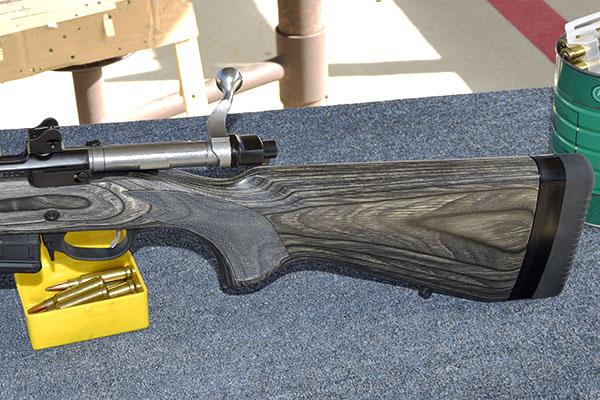
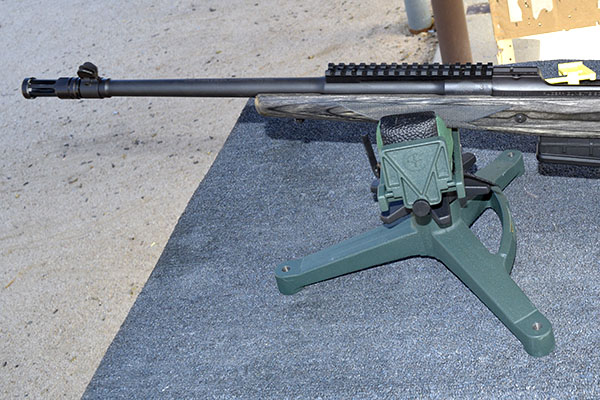
They are cool rifles. The GSR rifle has a Parkerized finish (which made it an immediate winner in my book), a laminated stock, scope rings and a Picatinny rail, and a couple of recoil pad spacers so you can increase the length of pull to adjust it to what you like. I didn’t put my two spacers in; I liked the rifle as delivered with its short stock. The rifle had two 10-round metal mags that rattled a lot; I bought a plastic 5-round mag and that’s all I use (I like the sleeker look and the fact that it doesn’t rattle). I don’t need 10 rounds. Five will do just fine, thank you.
I don’t shoot the GSR that often, but I like it a lot. It is a comfortable and handy rifle. If I had a truck it would be a truck gun.

Before Jim went to his reward, he and I spent a lot of time doing the things God put us here to do, which is to say we covered a lot of miles on our motorcycles and we spent a lot of time at the gun club sending lead downrange. On one of our trips to the range, Jim brought along a sheet of bulletproof glass. I was kind of floored when he pulled it out of his car and told me what it was. Bulletproof glass? Bitchin’! I’ll take that challenge!
That big old pane of superthick glass was the same stuff you see in banks. Before he retired, Jim owned one of those PayDay advance stores and I think the state required him to use bulletproof glass. Or maybe Jim just thought it would be a cool thing to have in his store. Whatever. It was a good inch (at least an inch) think and the pane was about 15 inches tall and 3 feet wide. Maybe it was designed to go on top of a counter. It had a real light greenish hue to it. If you’ve ever been in a bank, you’ve seen this stuff.
You can probably guess where this story is going. Yep, we set that pane up, leaning against a rock, about 50 feet out and went to work. Jim started shooting at it with a .357 Magnum Ruger SP 100 revolver. Pew! Pew! Pew! You know, just to see if it really was bulletproof. I mean, he had owned it for years, and I suppose ol’ Jim had been wondering for a long time. Just curious, man. Big kid stuff. And that’s what we were that day. Two kids in their 60s shooting at bulletproof glass. If we had been 50 or 60 years younger, we would have been blowing up model cars with cherry bombs. This day was devoted to shooting bulletproof glass, just to see if it really was. Bulletproof glass. Let’s check it out!
Jim’s .357 bullets didn’t even dent that glass. We looked at the pane’s surface up close, and we could maybe see a dust shadow where the .357 slugs had flattened. But they didn’t penetrate or mark the glass at all. This was cool stuff. It really was bulletproof. If I worked in a bank, I remember thinking, I would have felt pretty good about all this, hunkered down behind that green translucent armor. John Dillinger? No big deal. Bulletproof glass, see?
Okay, I thought, enough pussy-footing around (can you even say that any more?). It was time to call up the heavy artillery. I loaded the Ruger GSR with one of my .308 cartridges using a 173-grain full metal jacket bullet and drew a bead. You know, just to see what would happen. Sight alignment. Front sight focus. Breath control. Concentration. Slow, steady squeeze, and BOOOOM!!!
You know, a .357 Magnum is a powerful handgun, and you can sort of feel its power in the air when a round lights off. But when you hear a .308 rifle let loose, there’s no comparison. It’s God calling, and He wants to talk to YOU. You damn well better be paying attention. Firing a high-powered rifle, you see, is a religious experience.
The result? The .308 went through the “bulletproof” glass like it wasn’t even there, with severe spall on the exit side. It made a .30-caliber hole going into the pane and left a two-and-a-half-inch conical hole going out. And that 173-grain copper-jacketed-boat-tailed projectile probably didn’t even notice what it had just whizzed through. Good Gawd!
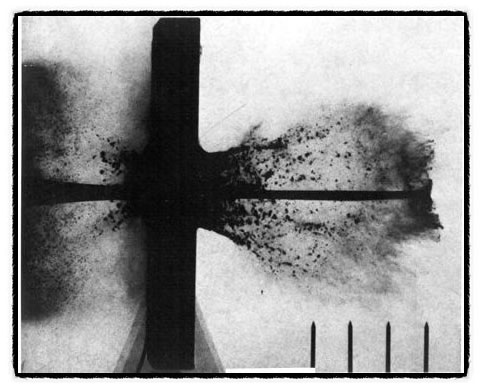
So, about that spall thing: Spallation is what happens when a high-speed projectile encounters a brittle barrier. It’s a cone of material that splinters into whatever you are shooting. You’ve probably seen this without realizing what you were looking at if you’ve ever seen a window shot with a BB gun. It’s the conical shaped hole on the opposite side of glass, the glass that shatters and flies in the direction of the BB (don’t ask me how I know this; let’s just say there were a lot of windows where I grew up that displayed classic spallation, and leave it at that). Spallation is the same physics effect that does most of the damage in an enemy tank when you hit one with an antitank warhead (the tank’s armor “spalls” into the interior of the vehicle and completely ruins the rest of the day for the crew). It’s what you see in that photo above.
Anyway, seeing that coned-out “bulletproof” pane really opened my eyes to the tremendous power a .308 rifle has over a .357 handgun. Yeah, it was bulletproof glass, but only up to a point. Bring enough gun, and bulletproof don’t mean diddly squat (“diddly squat” is a munitions term meaning of negligible value). And while I’m expanding the lexicon here, I guess I’ll mention that “bring enough gun” probably applies to a lot of situations. In this situation, bulletproof glass was no match for the Ruger GSR. If I had been thinking, I would have grabbed a photo or two of that pane, but I wasn’t and I didn’t. I was thinking if I was a pencil-necked geek of a bank teller and Dillinger walked in with a .308 rifle, I would probably pee my pants.
The bulletproof glass engineering evaluations aside, I had my Ruger GSR and you know I had to start testing its accuracy with different loads. What I noticed right away is that the rear aperture sight on my rifle didn’t have enough range of adjustment. With the rear sight cranked all the way over to the left, the rifle still shot to the right of my point of aim at 100 yards. I thought maybe I could compensate for it with the right reload, but I couldn’t, so the rifle went back to Ruger. They had it back to me in a couple of weeks after hogging out the stock to completely free float the barrel, and the problem was gone. I thought they did an amateurish bit of woodworking on the warranty repair, but it sure did the trick. The GSR shot to point of aim with the rear peep centered on the rifle. I went through my standard load development program with a variety of loads and propellants, and one stood out. Here’s the target I shot with it:
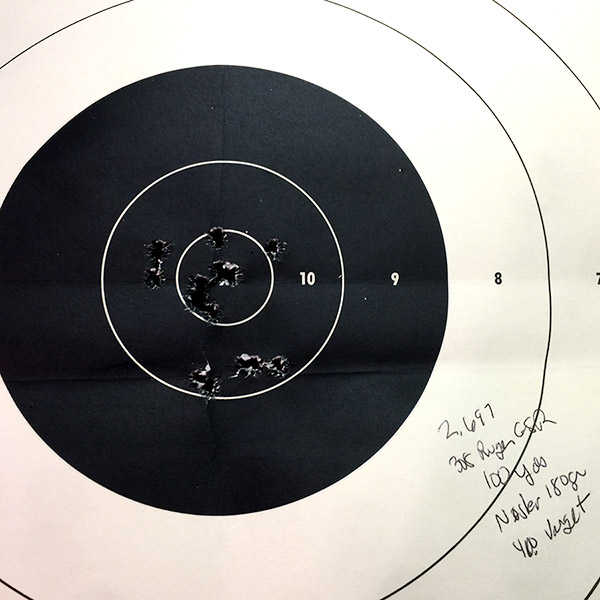
The load for the target you see above used 180-grain Nosler jacketed softpoint boattail bullets (their Part Number 27567), a 2.800-inch cartridge overall length, no crimp on the bullet, 40.0 grains of Varget propellant, a CCI 200 primer, and Remington brass. The Nosler bullets are expensive, as I recall. I had them on the bench for probably 20 years or more and I just decided to use them up as part of the load development for the Ruger. I still have a few left, and when I use them up I’ll buy more.
The Ruger GSRs list at around $1200 now on the Ruger website (the typical retail price is about $1000), and you can still find good deals on them. I’ve seen the .223 GSR go on sale for as little as $599 at Turner’s, our local gunstore chain here in California. That’s a hell of a deal. They are offered in more calibers, too, including the new 350 Legend and the 450 Bushmaster (two cartridges with which I have zero experience, but they sure seem cool). The other calibers aside, the .308 is still the king in my opinion, and I sure can’t argue with its accuracy. These are cool guns. You need one. Colonel Cooper was right.
Don’t forget: Click on those popup ads!
More Tales of the Gun here!

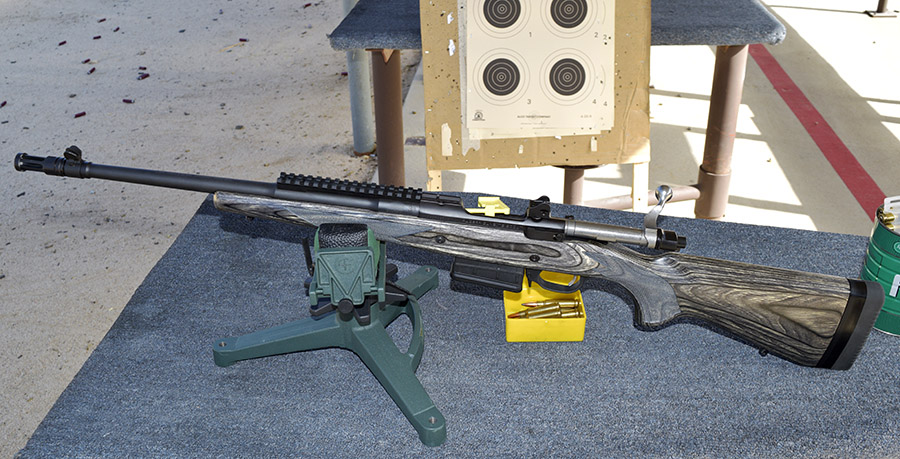
“…’diddly squat’ is a munitions term meaning of negligible value…”
Heh, heh, heh… got that right!